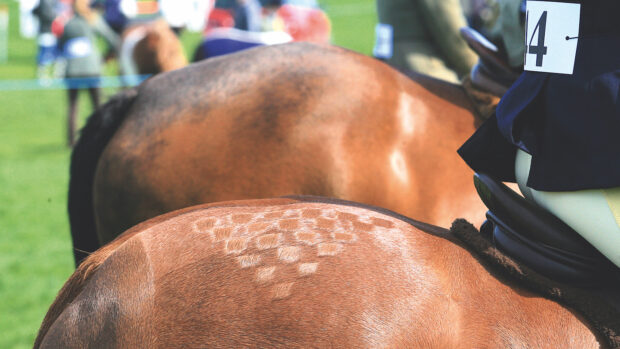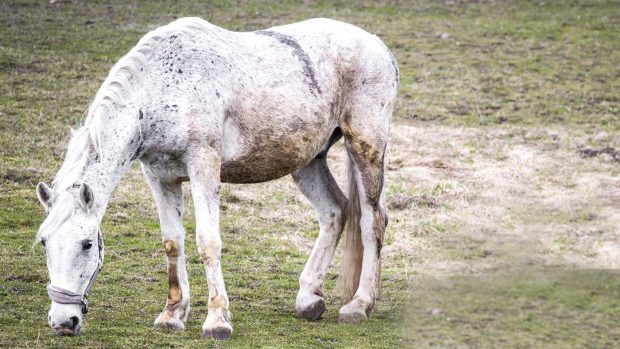Clipping – and particularly the timing of the final clip of the season – is a subject which always generates a healthy debate. H&H asked grooms, producers and owners when – or if – the clippers get put away for the season
Anyone who has ever watched nervously for the first signs of hairiness in the final weeks approaching Horse of the Year Show (HOYS) will know that, by mid-September, most horses are beginning to grow their winter coat. Clipping means horses can stay in work comfortably in the colder months without sweating excessively, but the question of when to do the final clip is an age-old debate.
For traditionalists, clipping after the end of January risks damaging the summer coat and is a definite no no. Groom Emma Mason sends her clippers off for servicing in early February, having done her final clip of the year in late January.
“Anything later than that and you risk having horses looking like skinned rabbits going into early summer. We manage their coats using a combination of appropriate rugs, regular grooming and hot clothing to stimulate the skin, and feeding a top quality balancer plus linseed oil.”
Coat growth in horses is controlled by a response to changes in daylight hours. As daylight hours shorten in late summer, melatonin production increases to stimulate the winter coat growth; similarly, as days lengthen in January and February, the horse’s hair follicles are already preparing a summer coat.
Hayley Reynolds specialises in native ponies, as well as being a panel judge and has also been a brand ambassador for Lister Clipping. She has perfected the art of using Covercote blades, which leave 5mm of coat instead of the much shorter 2.5mm of normal blades, and give a less ‘clipped’ look.
“Knowing the horse or pony you are clipping is essential – I do a lot of native ponies, and there’s no doubt the grey Welsh section A ponies need a much earlier final clip than something like a black Fell. If you’re not careful, a grey sec A clipped on New Year’s Day can still look clipped in early May, and certainly with something like a double-coated Exmoor I wouldn’t want to go later than 1 January to avoid affecting the colour of the summer coat,” says Hayley, whose final clip date is usually Valentine’s Day.
She also advises understanding how much time to leave after clipping to achieve show-ring ready coats, with anything from 10 days to three weeks needed post-clip to lose the tiny lines left by the clipper blades. The rise in popularity of Covercote blades has led to many competitors choosing to refine their horses’ coats this way year round.
Joanne Dewhurst has a heavyweight show cob and uses the blades to keep a fine, summer-type coat, as does Kimberley Maw for her native show cob.
“I clip ‘Kiwi’ all year round, probably at four to six week intervals depending on what shows he is doing. I make sure there’s always at least a week’s growth after a clip and take time to blend his legs at the knee and hock to make his coat look as natural as possible,” says Kimberley.
Producer Melanie Booth is another who is happy to clip at any time of year if the horse in question needs it.
“I don’t think it ruins their summer coat – I’ve clipped as late as March and the summer coat that came through was fab.”
Ele Milwright agrees that ruining the summer coat with late clipping is a myth.
“When I was showing my cob, we would clip right up to March or even April and still got great feedback from judges from spring shows onwards. However, you do need to be careful of old clip lines, for example if you’ve done a trace or blanket clip at some point, and these need removing in good time.”
In the end, it comes down to personal choice and knowing each horse, says producer Andrew Collins.
“I’m working to [show date] time scales, so always work on the basis of ‘it’s not what you clip off, it’s what you leave on’!”
- To stay up to date with all the breaking news from major shows throughout 2025, subscribe to the Horse & Hound website
You may also be interested in:

Which type of clip is right for your horse? Check out H&H’s helpful guide

My horse dislikes being clipped and won’t stand still — what should I do?
Here Jason Webb of Australian Horse Training gives one H&H forum user advice on clipping a horse that hates the

Best horse clippers to tame even the wildest of winter coats

Fix up and look sharp with these top trimmers

Subscribe to Horse & Hound magazine today – and enjoy unlimited website access all year round





